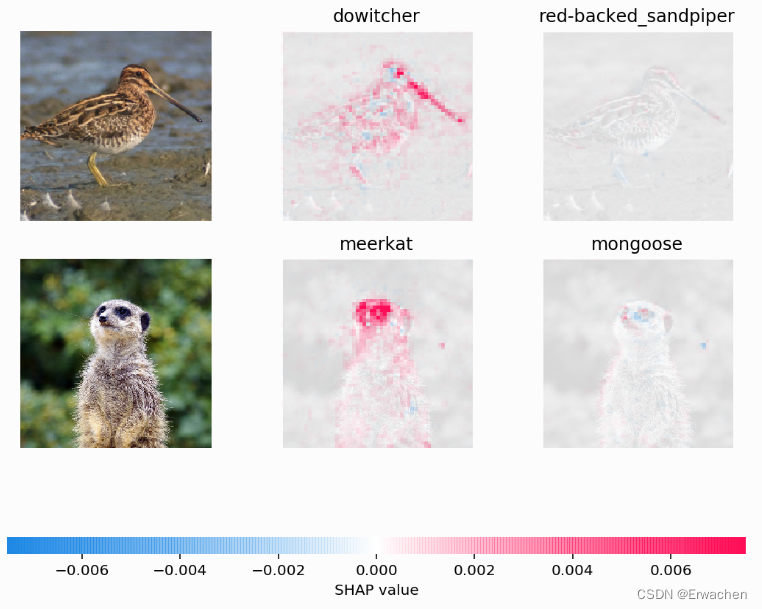#导入库
from keras.applications.vgg16 import VGG16
from keras.applications.vgg16 import preprocess_input, decode_predictions
import numpy as np
import shap
import keras.backend as K
import json# load pre-trained model and choose two images to explain
model = VGG16(weights='imagenet', include_top=True)
X,y = shap.datasets.imagenet50()
to_explain = X[[39,41]]
# load the ImageNet class names
url = "https://s3.amazonaws.com/deep-learning-models/image-models/imagenet_class_index.json"
fname = shap.datasets.cache(url)
with open(fname) as f:
class_names = json.load(f)
# explain how the input to the 7th layer of the model explains the top two classes
def map2layer(x, layer):
feed_dict = dict(zip([model.layers[0].input], [preprocess_input(x.copy())]))
return K.get_session().run(model.layers[layer].input, feed_dict)
e = shap.GradientExplainer((model.layers[7].input, model.layers[-1].output),
map2layer(preprocess_input(X.copy()), 7))
shap_values,indexes = e.shap_values(map2layer(to_explain, 7), ranked_outputs=2)
# get the names for the classes
index_names = np.vectorize(lambda x: class_names[str(x)][1])(indexes)
# plot the explanations
shap.image_plot(shap_values, to_explain, index_names)产生报错:TypeError: Tensors are unhashable. (KerasTensor(type_spec=TensorSpec(shape=(None, 224, 224, 3), dtype=tf.float32, name='input_2'), name='input_2', description="created by layer 'input_2'"))Instead, use tensor.ref() as the key.
经查是tensorflow版本由v1升级成v2所产生的问题。
对代码进行如下修改:
import keras.backend
import tensorflow as tf
tf.compat.v1.disable_v2_behavior()
def map2layer(x, layer):
feed_dict = dict(zip([model.layers[0].input], [preprocess_input(x.copy())]))
return tf.compat.v1.keras.backend.get_session().run(model.layers[layer].input, feed_dict)成功运行

# explain how the input to the 7th layer of the model explains the top two classes
explainer = shap.GradientExplainer(
(model.layers[7].input, model.layers[-1].output),
map2layer(preprocess_input(X.copy()), 7),
local_smoothing=100
)
shap_values,indexes = explainer.shap_values(map2layer(to_explain, 7), ranked_outputs=2)
# get the names for the classes
index_names = np.vectorize(lambda x: class_names[str(x)][1])(indexes)
# plot the explanations
shap.image_plot(shap_values, to_explain, index_names) 






















 1394
1394











 被折叠的 条评论
为什么被折叠?
被折叠的 条评论
为什么被折叠?








